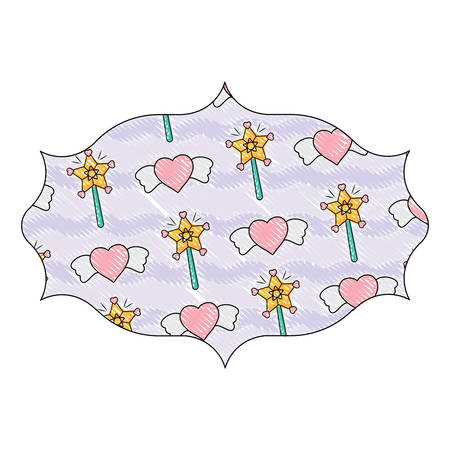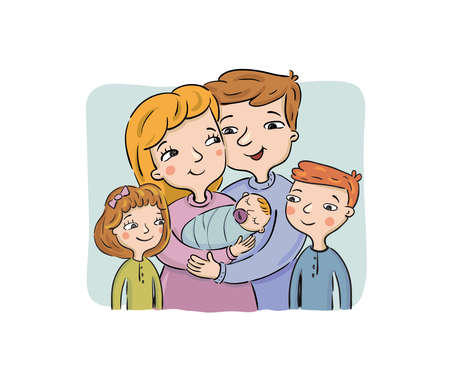Introduction: Navigating Pet Loss in the UK
Losing a beloved pet can be one of the most heart-wrenching experiences a child faces, especially here in the UK where pets are cherished members of the family. From playful pups romping through the countryside to wise old cats snoozing by the fire, our animal companions shape childhood memories and daily routines. When a pet passes away, children may feel a whirlwind of emotions—sadness, confusion, even guilt. As travel writers who adore sharing adventures with our furry friends, we understand that saying goodbye is more than a simple farewell; it’s an important step for healing. In British culture, rituals and farewells play a unique role in helping children process their grief. Whether it’s a heartfelt ceremony in the garden or crafting a memory box filled with paw prints and photographs, these acts offer comfort and closure. This article explores how UK families support their young ones through pet loss using traditions both old and new, highlighting why these moments matter so deeply.
2. The Power of Ritual: Embracing Goodbyes
In the heart of British culture, rituals hold a special place when it comes to saying goodbye to a beloved pet. These gentle traditions help children process their feelings and give shape to their grief. Whether its gathering in a quiet corner of the garden, writing heartfelt notes, or crafting handmade keepsakes, each ritual offers comfort and connection during a difficult time.
For many families across the UK, the act of farewell is not just about closure—its a meaningful way to honour the life shared with a furry (or feathery) friend. Children are encouraged to participate in these rituals, giving them space to express their emotions and memories in unique ways. Sometimes, its as simple as planting a flower where their pet loved to play, or perhaps creating a small scrapbook filled with photos and drawings.
Common Farewell Rituals in the UK
| Ritual | Description | Purpose for Children |
|---|---|---|
| Garden Gathering | A quiet moment outdoors, often where the pet spent happy times. | Offers space for reflection and sharing stories with family. |
| Handwritten Notes | Letters or cards written by children expressing love and memories. | Allows emotional expression and helps articulate grief. |
| Handmade Keepsakes | Crafting memory boxes, collars, or paw print art. | Creates tangible reminders and channels creativity. |
The Role of Family Participation
Bidding farewell together strengthens family bonds and reassures children that they are not alone in their sadness. Parents often share their own stories of loss, helping youngsters feel understood and supported. Involving siblings or friends can also make rituals more comforting and communal.
Encouraging Personalisation
No two goodbyes need to look alike. Some families might read favourite poems—perhaps something from A.A. Milne or Michael Rosen—while others might light a candle or hang a wind chime in remembrance. The key is allowing children to help shape the farewell so it feels personal and meaningful, reflecting both British traditions and their own familys quirks and affections.

3. Traditional UK Farewells for Furry Friends
When a beloved pet crosses the rainbow bridge, families across the UK often turn to comforting rituals deeply rooted in local tradition. For children, these familiar acts offer a gentle way to say goodbye and celebrate the cherished adventures shared with their furry companions. Here’s how British families weave culture and memory into farewells:
Garden Burials: A Corner of Comfort
Many British households with gardens create a special resting place for pets—a practice that blends practicality with heartfelt tribute. Children are encouraged to help choose a spot, perhaps under a favourite tree or beside a blooming rose bush. Decorating the site with painted stones or home-crafted markers allows little ones to express their feelings in creative ways.
Memory Boxes: Treasured Keepsakes
Another popular tradition is assembling a memory box filled with reminders of joyful times together. Children might add collars, favourite toys, photos, or handwritten notes. This small ritual helps them hold onto happy memories while gently processing their grief.
| Tradition | Description | Cultural Touchstone |
|---|---|---|
| Garden Burial | Burying a pet in the family garden; marking the spot with flowers or stones | Symbolises ongoing connection and care |
| Memory Box | A decorated box filled with mementoes from the pet’s life | Encourages storytelling and reflection |
| Storytelling Session | Gathering to share tales about the pet’s adventures and quirks | Cements memories as part of family lore |
Storytelling Sessions: Keeping Spirits Alive
In true British fashion, nothing brings people together like a good story. After a loss, families may gather over a cup of tea to recount funny or heartwarming moments with their pet. Children are invited to share their own favourite memories—sometimes even drawing pictures or writing short poems to capture their unique perspective. These sessions often become treasured family traditions, helping little ones see that love lingers long after goodbye.
4. Community and Family Support
In the heart of British culture, community and family support play an essential role when children face the loss of a beloved pet. Navigating grief can feel overwhelming, especially for little ones experiencing it for the first time. Fortunately, families, friends, schools, and local communities across the UK often join together to offer comfort and understanding during these tender moments.
How Communities Rally Together
From the bustling streets of London to the close-knit villages in the Cotswolds, communities have unique ways of supporting young hearts in mourning. British schools may arrange gentle conversations or remembrance assemblies, while neighbours often stop by with a thoughtful card or perhaps some homemade shortbread. Churches and local groups sometimes hold special pet memorial services, encouraging children to share stories or drawings that celebrate their pet’s life.
Family Traditions that Offer Comfort
Every family develops its own rituals—perhaps gathering in the garden where the pet loved to play or lighting a candle together at teatime. These shared acts not only help children process their emotions but also reassure them that they are not alone on their journey through grief.
Support Systems for Children Grieving Pet Loss in the UK
| Support Type | Description | Example in the UK |
|---|---|---|
| Family Gatherings | Coming together to share memories and feelings about the lost pet. | Sunday roast with a special toast to the pets memory. |
| School Support | Teachers and school counsellors provide emotional guidance and safe spaces for discussion. | Pupil wellbeing sessions or pet-themed story time in primary schools. |
| Friendship Circles | Friends offering companionship and distraction from sadness. | Inviting the child over for a playdate or a walk in the park. |
| Community Initiatives | Local groups organise events or memorials for pets. | Village green ‘Pet Remembrance Day’ with crafts and poems. |
| Online Resources | Digital platforms offering advice and forums for sharing experiences. | The Blue Cross Pet Bereavement Support Service. |
This tapestry of support helps children across Britain feel seen and cared for as they say goodbye to their furry (or scaly) companions. Whether it’s a heartfelt chat over biscuits or participating in a community event, these traditions ensure that every child’s grief is gently cradled by those around them.
5. Honouring Memories: Creating Lasting Tributes
When a beloved pet crosses the rainbow bridge, British families often find comfort in creating lasting tributes that both honour their furry friend and support children through the grieving process. Memorialising pets isn’t just about saying goodbye; it’s about celebrating the joy they brought into our lives and ensuring those treasured memories linger long after the pawprints have faded.
Traditional and Modern Ways to Remember
Across the UK, families are weaving together old customs and new technology to help little ones express love and loss. Here are some thoughtful ideas for memorialising a cherished pet:
Memorial Idea |
Description |
How It Helps Children Grieve |
|---|---|---|
| Planting a Tree or Flower | Choose a spot in the garden or a local park to plant something beautiful in your pet’s memory. | Watching the tree or flowers grow gives children a living symbol of their pet’s ongoing presence. |
| Creating a Memory Box | Fill a box with collars, favourite toys, photos, and drawings. | The tactile act of collecting items helps children process feelings and revisit happy moments when needed. |
| Digital Memory Book | Use apps or websites to compile pictures, videos, and stories about your pet. | A modern take that appeals to tech-savvy kids, allowing them to share memories with friends and family. |
| Pebble Painting | Paint your pet’s name or likeness on a pebble and place it somewhere meaningful. | This hands-on craft offers a creative outlet for emotions while giving children something tangible to hold onto. |
| Candlelit Evenings | Gather for an evening where everyone shares stories by candlelight. | The ritual of lighting candles creates a comforting atmosphere for sharing and support. |
Why These Rituals Matter
UK traditions gently guide children through grief by shifting focus from loss to remembrance. Whether it’s tending a memorial rose bush on a misty morning or uploading photos to an online scrapbook, these acts provide structure during uncertain times. They offer space for laughter as well as tears, teaching youngsters that while goodbyes are hard, love continues in many forms. By embracing both time-honoured rituals and new creative outlets, families across Britain help children cherish their pet’s memory—and heal together.
6. Open Conversations: Encouraging Healthy Grief
In the UK, fostering open and honest conversations about pet loss is seen as a vital part of supporting children through their grief journey. Gentle dialogue helps young ones understand that sadness, confusion, or even anger are normal reactions when saying goodbye to a beloved animal companion. British families often prioritise talking together over a cup of tea, allowing children to ask questions and express their emotions in a safe environment.
The Importance of Honest Dialogue
Children’s understanding of death and loss evolves with age, so clear, age-appropriate explanations are essential. In many British households, euphemisms like “gone to sleep” are avoided in favour of gentle but truthful language—helping prevent confusion and building trust between adults and children.
Tips for Healthy Communication
| Approach | How It Helps |
|---|---|
| Encourage Questions | Lets children express concerns and curiosity about what has happened. |
| Use Honest Words | Builds trust and reduces misunderstandings about death. |
| Acknowledge All Feelings | Validates childrens emotions and shows it’s okay to grieve. |
| Share Personal Memories | Helps connect family members and keeps positive memories alive. |
British Traditions: Conversation Starters
During rituals like lighting a candle or creating a memory box, British parents might prompt conversation by asking, “What was your favourite thing about our pet?” or “Is there something you’d like to remember them by?” These gentle prompts invite children into the grieving process and encourage healthy emotional expression.
Ultimately, honest communication not only supports individual healing but also strengthens family bonds—reminding everyone that love for a pet doesn’t end with their passing. Open conversations provide comfort, reassurance, and an important foundation for lifelong resilience in facing future goodbyes.


